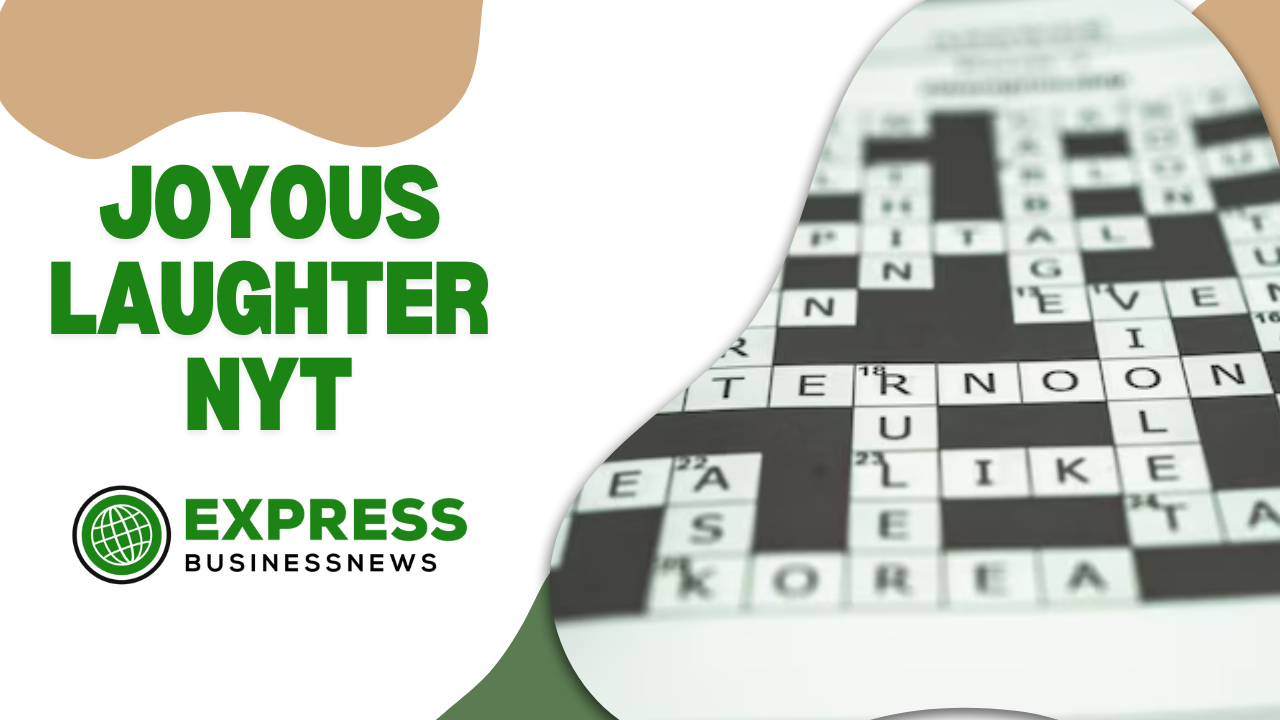Introduction to Joyous Laughter NYT
The New York Times crossword puzzle is more than just a daily challenge for word enthusiasts; it’s a cultural phenomenon. It has entertained and engaged solvers for decades with its clever clues, intricate wordplay, and the occasional burst of Joyous Laughter NYT. One of the most delightful aspects of the NYT crossword is its ability to induce “joyous laughter nyt,” a reaction that solvers experience when encountering a particularly witty or Joyous Laughter NYT clue or answer.
This article explores the role of Joyous Laughter NYT in NYT crosswords, the techniques constructors use to elicit laughter, and why this fun element is essential to the puzzle’s enduring popularity.
The Specialty of Making Euphoric Chuckling NYT in Crosswords
The Role of the Constructor
Constructors, the masterminds behind each crossword puzzle, are challenged to create engaging and solvable clues. Joyous Laughter NYT often plays a critical role in achieving this balance. Constructors inject lightheartedness into their puzzles through wordplay, puns, and misdirection, making the experience more enjoyable for solvers.
Types of Clues
Puns and Wordplay: The bread and butter of crossword Joyous Laughter NYT, puns are often used to create double meanings that can catch solvers off guard. For example, a clue like “Took the bait” might lead to the answer “ATE,” playing on the literal and figurative meanings of the phrase.
Misleading Clues: These are designed to lead solvers down the wrong path, only to reveal a clever twist. A classic example is the clue “Lead balloon?” with the reaction “Zeppelin.” Here, the Glad Giggling NYT c comes from the astonishing comprehension of “lead” as a material rather than a directional marker.
Cultural References: Many NYT crossword puzzles include references to pop culture, literature, and history laced with Joyous Laughter NYT. These clues often require solvers to think outside the box and appreciate the wit behind the reference.
Case Studies: Memorable Moments of Joyous Laughter
The “Gotcha!” Clue
One of the most satisfying moments for any solver is finally ” getting” a tricky clue. These moments often lead to joyous laughter as the solver recognizes the cleverness of the clue, and the Joyous Laughter NYT behind its renowned model is the sign “Where ‘E’s on a guide” with the response “NILE.” The Upbeat Giggling NYT lies in the confusion, as solvers are directed to think about geographical locations rather than the actual letter “E” in the word “Nile.”
The Unexpected Answer
Sometimes, the Joyous Laughter NYT in a crossword comes from an entirely unexpected yet perfectly fitting answer. For instance, a clue like “It may be stretched or spun” could lead to the answer “YARN,” playing on both the literal and metaphorical meanings of the word. The laughter comes from the solver’s realization of how cleverly the answer fits the clue.
The Playful Theme
NYT crossword puzzles often feature themed puzzles where a common thread connects all the clues or answers. When the connection between the answers is revealed, these themes can source Joyous Laughter NYT. For example, a question could incorporate a subject where all reactions are homophones of famous articulations or expressions, provoking engaging “aha!” moments for the solver.
The Psychology Behind Joyous Laughter in Crosswords
The Element of Surprise
Joyous Laughter NYT in crosswords often hinges on the element of surprise. When a solver encounters an unexpected twist in a clue or answer, the brain experiences a brief cognitive dissonance, quickly resolved when the answer is revealed. This goal prompts an arrival of pressure, frequently bringing about giggling. This psychological process is similar to how Joyous Laughter NYT works in-jokes, where the punchline provides a surprising and satisfying conclusion.
The Reward of Cleverness
Crossword solvers often take pride in their ability to solve challenging puzzles. When a clue is particularly clever or Joyous Laughter NYTous, it provides a sense of reward and accomplishment. This feeling is amplified by the social aspect of crosswords, where solvers often share their favorite clues with friends or online communities, spreading the joy and laughter the puzzle provides.
The Social Aspect of NYT Crosswords
The NYT crossword community is vast and engaged, with solvers frequently discussing their favorite puzzles and clues on social media, forums, and blogs. Joyous Laughter NYT plays a significant role in these discussions, as solvers share the clues that made them laugh and the answers that caught them off guard. This communal appreciation of crossword Joyous Laughter NYT fosters a sense of camaraderie among solvers and contributes to the puzzle’s enduring popularity.
Why Joyous Laughter NYT Matters in Crosswords
Enhancing the Solving Experience
Joyous Laughter NYT adds an extra layer of enjoyment to the crossword-solving experience. While solving a crossword is inherently satisfying, adding Joyous Laughter NYT makes the process more engaging and memorable. It transforms the puzzle from a mere intellectual exercise into a source of entertainment, where solvers can appreciate the constructor’s wit and creativity.
Encouraging Solver Retention
For many solvers, the promise of encountering a funny or clever clue is a significant motivation to return to the NYT crossword day after day. This anticipation of joy and laughter keeps solvers engaged and loyal to the puzzle, ensuring its continued success.
Creating Memorable Puzzles
Some of the most memorable NYT crossword puzzles have made solvers laugh. These puzzles often become legendary within the crossword community, with solvers recalling specific clues or answers years after encountering them. The ability to create such lasting impressions is a testament to the power of Joyous Laughter NYT in crosswords.
Conclusion
The joyous laughter accompanying solving an NYT crossword puzzle is a testament to the puzzle’s unique blend of challenge and entertainment. Through clever wordplay, surprising twists, and playful themes, constructors create puzzles that not only test the mind but also bring a smile to the face of the solver. This combination of intellectual stimulation and Joyous Laughter NYT makes the NYT crossword a beloved daily ritual for millions of solvers worldwide.





